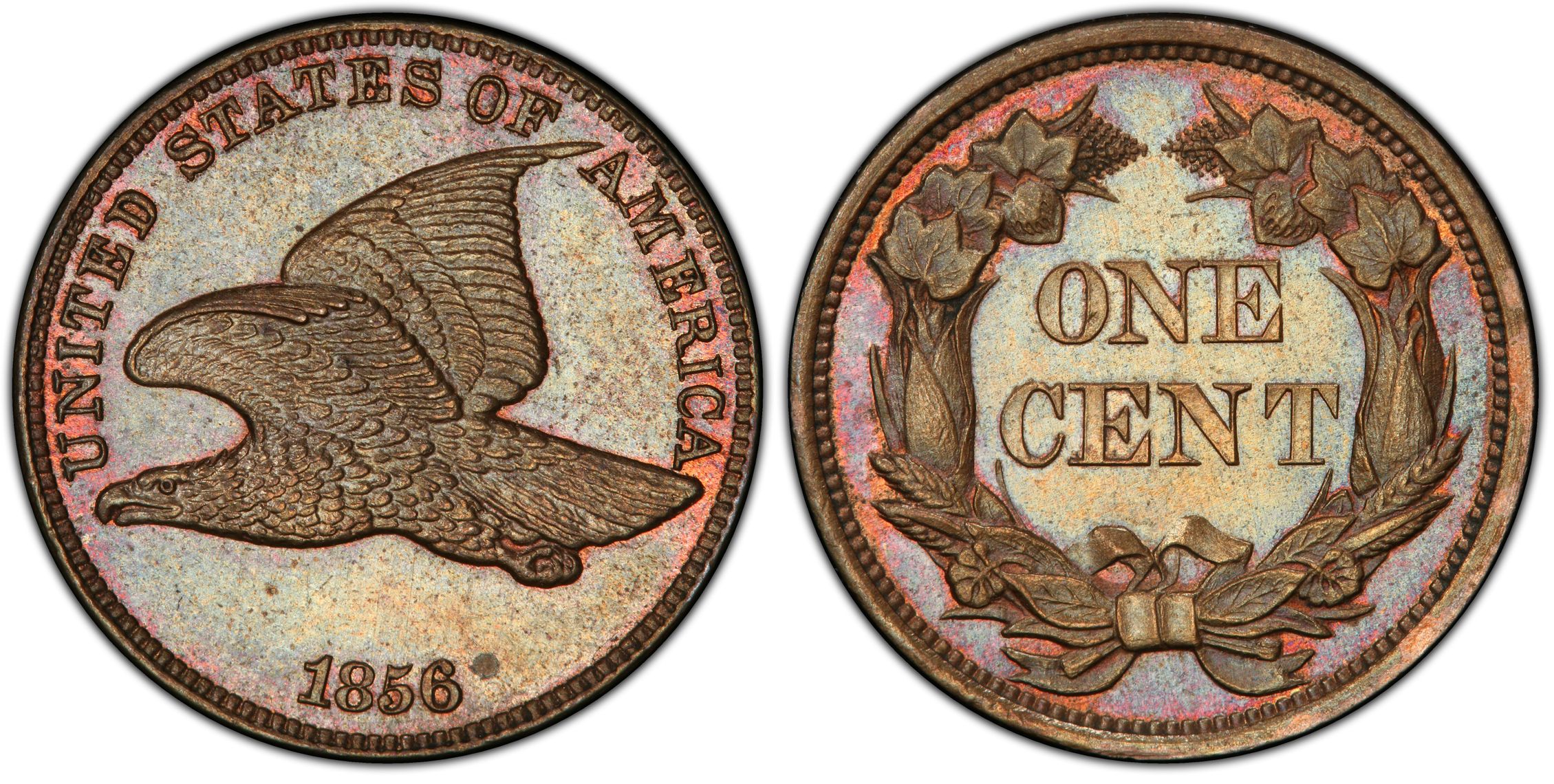1856 1C Flying Eagle (Proof)
Share

The 1856 1C Flying Eagle cent is a highly sought-after coin by numismatists due to its rarity and historical significance. It represents the transition from large cents to small cents in the United States, marking a pivotal moment in U.S. numismatic history. The 1856 Flying Eagle cent was initially produced as a pattern coin, intended to demonstrate the viability of the new small-cent specification.
Mint and Mintage
Produced at the Philadelphia Mint, the 1856 Flying Eagle cent had an estimated mintage of around 2,000 coins, although exact figures are debated among historians. These coins were initially distributed to Congress and other influential individuals to gain support for the transition to a smaller cent. The introduction of this cent laid the groundwork for widespread acceptance of the small-sized cents that followed.
Rarity and Numismatic Appeal
The rarity of the 1856 Flying Eagle cent is partly due to its limited mintage and its status as a pattern coin. It is considered one of the most coveted pieces among collectors of American numismatics. Each coin’s history and provenance can significantly impact its value, and these coins rarely surface in the market, adding to their mystique and desirability.
PCGS Information
According to PCGS CoinFacts, the 1856 Flying Eagle cent holds the PCGS #2001. This identifier helps collectors authenticate and locate valuable information regarding the coin’s market presence and historical sales. The coin's rarity is further compounded by the fact that few specimens remain in pristine condition, making high-grade examples extremely valuable.
Value and Historic Sales
The value of the 1856 Flying Eagle cent can greatly vary, largely depending on its condition and provenance. Coins in higher grades have achieved substantial prices at auction, often reaching into the six-figure range. Notable auction sales have included coins with strong provenance or those certified by major grading organizations in grades such as Proof-64 and above. For example, significant auction houses have seen Proof specimens realize impressive prices, demonstrating the considerable demand among collectors. An instance of such a sale included a Proof-65 Red and Brown specimen, which fetched a remarkable price, highlighting both its condition and the fervor surrounding these coins.
Historical Context
The creation of the 1856 Flying Eagle cent came about during a period of economic reform, aimed at reducing the cost of producing one-cent pieces. The previous large cents were cumbersome and costlier to mint, prompting the Treasury to advocate for smaller, more cost-efficient coins. The Flying Eagle cent, despite its brief mintage from 1856 to 1858, is emblematic of a transformative era in U.S. coinage. With its distinctive eagle design and storied past, the 1856 Flying Eagle cent continues to captivate collectors and historians. Its provenance, mintage, rarity, and aesthetic appeal combine to make it a centerpiece in any serious U.S. coin collection. The coin's allure is enhanced by the tales of its distribution and acceptance, making it a fascinating subject of study both for its artistry and its role in numismatic history.





